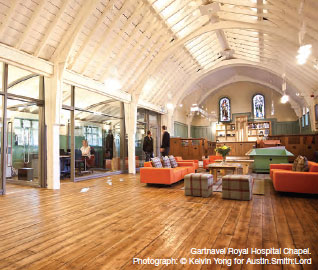Our Place in Time: the Historic Environment Strategy for Scotland
A high-level framework which sets out a 10-year vision for the Scotland's historic environment.
Values And Benefits Of The Historic Environment
Scotland's historic environment makes Scotland distinctive as a nation. It evidences the creativity of Scotland's people and demonstrates how Scotland acted variously as the edge of the known pre-historic world, to intellectual and industrial powerhouse of the world, to today's dynamic and creative society. Moreover, the historic environment is a critically important and ultimately sustainable resource for the people of Scotland. There are many ways in which it contributes today to a flourishing, healthy, and dynamic country.
Evidence suggests that a well maintained environment contributes to wellbeing and quality of life. This is true for both the 'natural' and 'cultural' elements. For example 93% of adults agree that "when trying to improve local places it is worth saving their historic features" and 71% agree that they are "interested in the history of the place where I live" (Taking Part, 2007/8). While there has been little substantive Scottish research on the wider range of values and benefits deriving from the historic environment, there are numerous studies in the UK and world-wide which consider these benefits. The results repeatedly show that the historic environment makes a strong contribution to people's quality of life. It is valued by communities at local and national level. This Strategy will seek to enhance these benefits and explore ways to demonstrate them.
Across the country, thousands of people actively seek to understand, care for and celebrate the historic environment in many different ways:
- The historic environment provides the backdrop to people's daily lives. It is all around us, it is where we live and work, and it is an asset.
- A wide range of professionals and specialists work to protect and promote the historic environment. These include surveyors, architects, archaeologists, archivists, museum curators, planners, engineers and craftspeople across many different skills and trades.
- The historic environment also attracts support from volunteers, from local communities to individuals. Thousands of people actively participate in initiatives such as monitoring coastal archaeology, cataloguing objects in museums or conserving individual sites or even whole townscapes.
Examples and Key Facts
Education
Around one in five (19%) reported school day visits within Scotland were to historic sites in 2012, according to survey estimates from the Moffat Centre for Travel and Tourism. More candidates also entered for Higher and Intermediate history exams in 2010/11 than in 2007/8, and more students studied historic environment-related courses at higher education institutions in 2010/11 than in 2007/8.
Construction Industry
33% of the industry's annual £9.6 billion turnover comes from the repair and maintenance of existing building stock, with an estimated £0.6 billion spent on pre-1919 buildings each year.
Building Preservation Trusts ( BPTs)
BPTs promote and support the rescue and sustainable use of historic buildings at risk. A recent ECOTEC report into BPTs in Scotland reported that since 1984 Scottish BPTs have saved over 110 buildings by giving them beneficial new uses which have created some 250 new homes, 75 workplaces and 25 community facilities.
Example: Gartnavel Chapel - Cancer Support Centre. This project, which was supported by the Glasgow BPT, has transformed the disused and dilapidated Gartnavel Royal Hospital Chapel into a complementary therapy centre for cancer patients.

Gartnavel Royal Hospital Chapel.
Photograph: © Kelvin Yong for Austin.Smith:Lord
Tourism
Evidence from the Scottish Household Survey shows that 28% of adults had visited a historic or archaeological site in the 12 months prior to 2012. The Moffat Centre for Travel and Tourism estimates that 14 million tourists visited historic environment attractions in 2012, representing one in three of recorded visits to all Scottish attractions. The Scotland Visitor Survey, Visit Scotland, 2011/12 shows that 43% of first time visitors to Scotland and 28% of all visitors to Scotland cite "to learn more about the history/culture of Scotland" as the key motivator for their trip to our country.
Economic Impact
The historic environment is estimated to contribute in excess of £2.3 billion (2.6%) to Scotland's national gross value added ( GVA) and to account for 2.5% of Scotland's total employment, supporting 60,000 FTE employees which includes seasonal employment.
To ensure that the cultural, social, environmental and economic value of our heritage continues to make a major contribution to the nation's wellbeing.
Contact
There is a problem
Thanks for your feedback